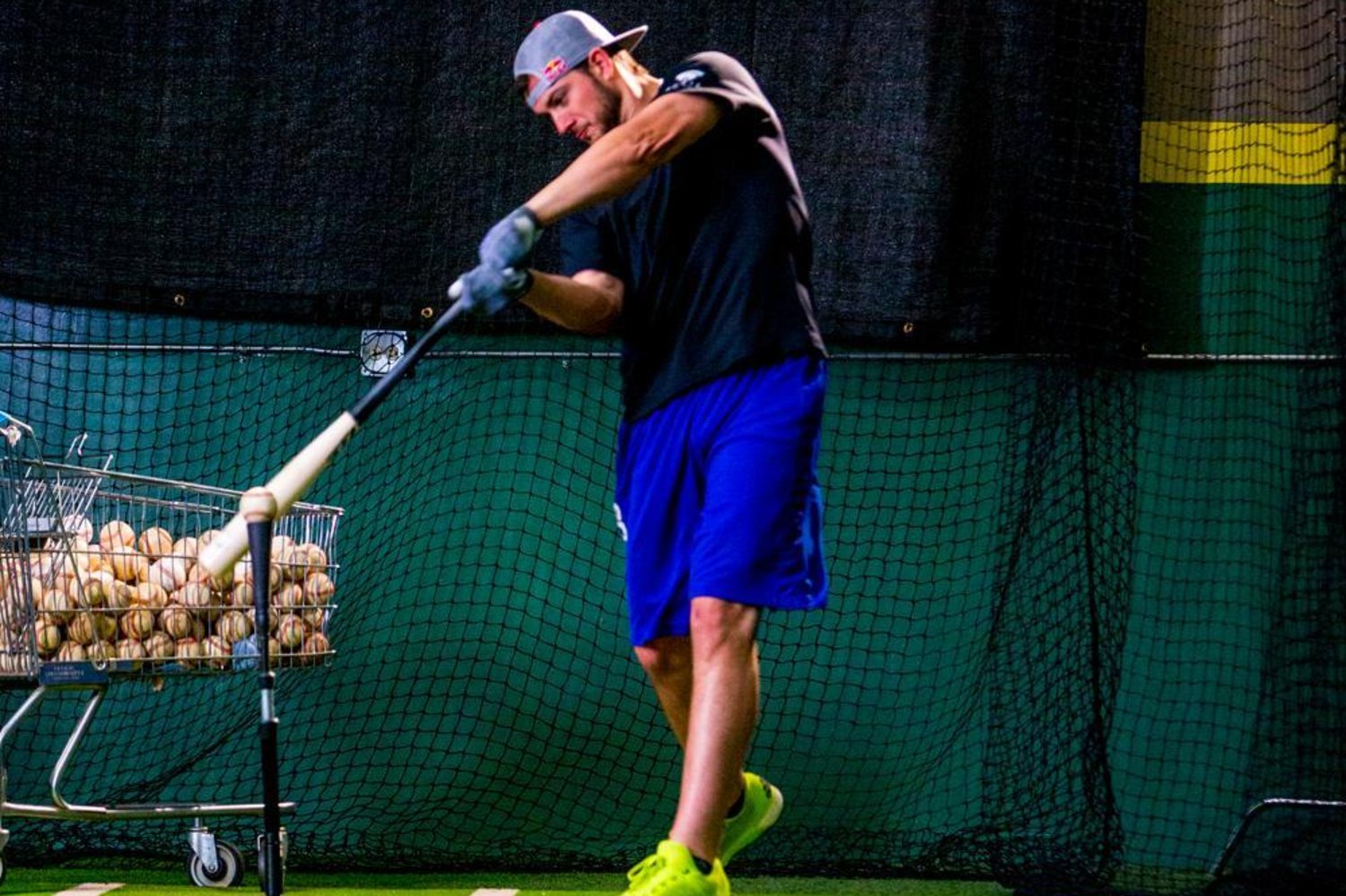Mike Bryant Explains Everything, Pt. 3: Pitchers Have Big Advantage, Potential for Bullpenning
The first two sections of my conversation with Mike Bryant, professional hitting instructor and father of Cubs “borderline superstar” Kris Bryant, established some truths about launch angle and also explained how his son has improved as a hitter. But that addressed only one side of the equation, which is what hitters are trying to do when they step to the plate.
Read Part 1: Dispelling Myths About Launch Angle Revolution
Read Part 2: How Kris Bryant Has Made Improvements
In case you hadn’t noticed, hitting a baseball is a pretty difficult endeavor even in ideal conditions. Add in higher velocity numbers, movement that defies physics, and the fact that you might face a different pitcher in each plate appearance, and you can imagine why hitters might be striking out a little more than usual.
Case in point: St. Louis’s Jordan Hicks recently threw a pitch clocked at 105.1 mph. None of the four other pitches in the at-bat registered less than 103.7, and we’re not talking about the kind of stuff that was just piped down the middle.
Similarly, the Cubs’ Brandon Morrow throws a 98 mph four-seamer that registers with two fewer seams because of its movement. Then he drops in a sharp slider that requires dramamine to watch without getting sick. And what about Carl Edwards Jr. throwing a fastball that moves like a slider? Or Steve Cishek getting all Red October?
There’s this concept that’s been out there for some time that the future of pitching could be in “bullpenning,” or stringing together a series of short stints from high-leverage pitchers instead of the more traditional starter/reliever model. That prevents the inevitable familiarity that comes from seeing a pitcher three or more times in a game and sets up all kinds of different matchup advantages for the men on the mound.
If you think the idea of bullpenning is far-fetched, just look to the Rays, who have used former closer Sergio Romo as their “starter” in consecutive gamesagainst the Angels this season.
“We value that third-time through so much,” Tampa skipper Kevin Cash said. “Three years ago, that was like the biggest secret in the world. It’s not a secret now. More teams talk about it. They understand the impact it has.
“I don’t think we’re trying to be too far ahead of the curve in saying that this is the way it’s going to go. That’s probably not the smartest thing for us to do. But it’s gone well. I know how our organization works, and they’re going to get a massive amount of information over time until they really start deciding what the best scenario is.”
It should be noted that Tampa has dealt with plenty of injuries and even though we’re nowhere near this becoming de rigueur across MLB, the seeds of change have been planted and are being carefully tended. Is there, then, a way for hitters to counter? After all, Bryant has certainly seen his contact numbers rise at a time when the league as a whole is trending opposite.
In this, our final segment, we’ll talk about the inherent advantages afforded pitchers and where the game could be headed as a result.
CI: Could we get to the point at which pitching is a commodity, not about having that guy who can go seven, eight, nine innings. It’s just load up on as many arms as we can that throw as hard as they can and keep doing it. So just stock them up and burn them out.
MB: I think it could be headed that way. I mean, teams are going to just start to draft guys that can throw 100, and they’re going to draft tons of them, because they know they’re going to have a Tommy John within, what, five years of their career? It’s pretty amazing how many people are having Tommy John before you’re even drafted now.
Pitchers can repeat their motion much easier than a hitter can repeat their swing. Because they’re ones that start the process. I always joke around saying that I loathe pitchers. You know, I don’t really loathe pitchers, but they’ve got the biggest advantage in any sport. Just look at their numbers. Think about it for a second. The best hitters are hitting .300 off of the guys that don’t make it.
But the [pitchers] in the big leagues, they all seem to have .208 average against, .187 average against, .238 average against. They have a built-in advantage. So for us, as hitters, to be able to succeed under those circumstances, it’s truly an accomplishment. It really is. Ted Williams used to say, “It’s the single-most hardest thing to do in sport, is to hit a round ball with a round bat squarely.”
The launch angle revolution is a wonderful thing, but these other things could just neutralize that in a heartbeat.
CI: We almost saw that from the Cubs [in Jen-Ho Tseng’s start], when they strung out all those relievers for an inning apiece. When you can alternate between Pedro Strop running up there in the mid-90’s and then Steve Cishek coming down submarine-style, and then Carl Edwards throwing the 95 mph fastball that breaks like a slider.
MB: Hashtag pitcher bias. Everybody gushes over pitchers’ abilities and this and that. They never talk enough about big hitters anymore, and when they do, they’re always talking about the guy that slaps the ball through the infield, instead of the guy that drives the ball into the gaps.
Let’s get a little radical here. Ready? Okay. We can expand the rosters to 32 from 25. Then you carry seven extra pitchers. They’re all going to throw 95 to 102, and we’re going to use one pitcher an inning. Or we might go two innings at the beginning so we use eight pitchers a game, or six pitchers a game. And we’re going have them all, trot them out there to throw 95 or 100 every inning.
We’ll take the offense completely out of the game. It would be gone. Launch angle won’t exist. You want to build Astro-turf stadiums again and we’ll put Willie McGees in the lineup and just bang the ball into the ground, bounce it 30 feet in the air, and get singles. Steal bases, and then everybody will draft guys that can run, like Billy Hamilton. And they’ll bunt, and the game will be boring, and then nobody will come and watch. That sounds a little cynical, right?
That was significantly shorter than the last one, but I think it’s still fun to see the other side of the coin, so to speak. The whole process is fascinating to me, watching as players on both sides of the ball fight for a competitive advantage within 60 feet, 6 inches of no-man’s land between the mound and the plate.
But what might be even more important is the 6 inches of real estate between a hitter’s ears. After all, a pitcher’s inherent advantages ensure that you’ll have to out-think him to beat him. That was a big focus of our conversation of what Kris is doing to improve as a hitter, how he’s focusing on the mental aspect of the game.
That’ll be increasingly important as we see the tactics like those employed by Cash and the Rays implemented on a broader scale across the game. Regardless of how that all plays out, I just hope we don’t end up with Astro-turf again.


Got something to say?